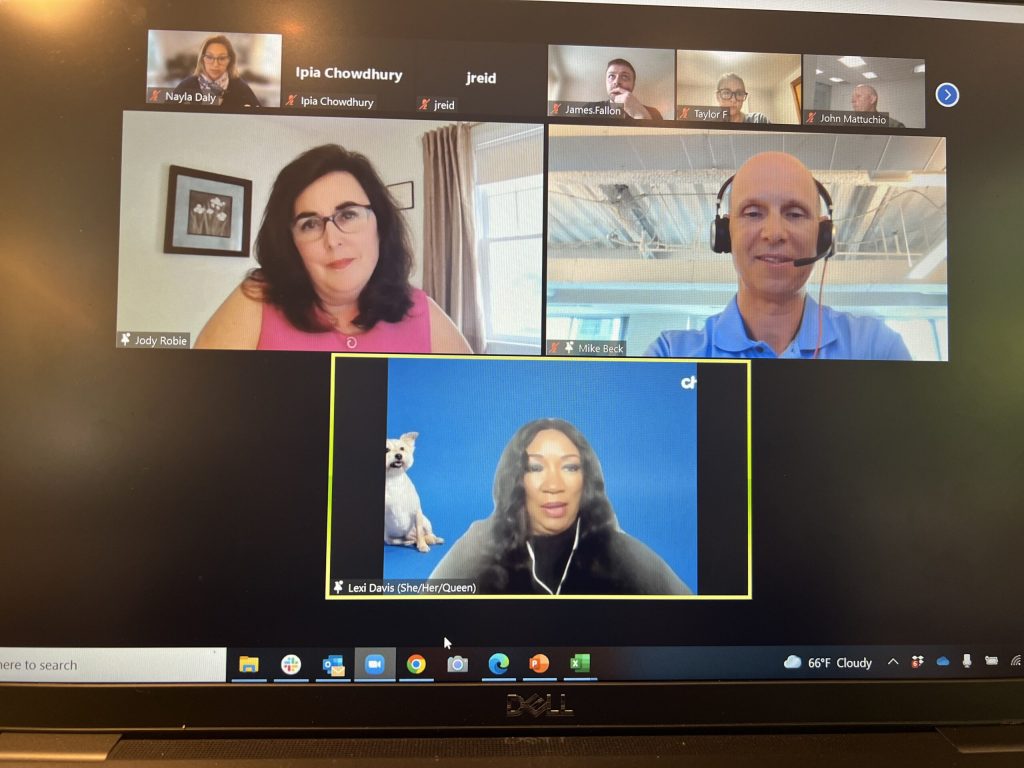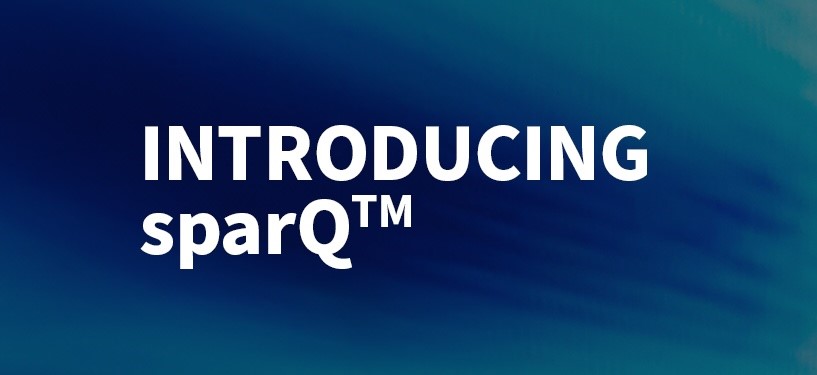MassTLC hosted the Talent Work’s Tech Talent Workshop: How to Hire and Scale Rapidly and here are some insights, strategies and challenges that were shared at the workshop.
I moderated with speakers Michael Beck, Director, People Operations, Nasuni, and Lexi Davis, Associate Director, Talent Acquisition, Chewy. This program brought senior talent professionals who lead the brand management and hiring in their tech organizations.
Here are the Top Takeaways
Regardless of whether you’re a B2B or B2C brand, today’s hiring landscape presents equal and common challenges. It’s a landscape unlike any other we’ve ever seen.
There’s no easy way to make great hires in 2022, but it’s obvious that the volume associated with sourcing has gone up dramatically. Hiring managers are busier than ever just trying to stay on top of application flow within their organizations and are lacking the time they need to sufficiently source or network. Regardless of the size or experience of acquisition teams, we’re seeing people asking for help to get the right hires at the right time.
Understanding your Employer Brand will be key to attracting the right talent. Do you know why people want to work for you? If you don’t, make the time to do some research, either internally or externally with some perception studies. This will help you to be authentic and relevant. Segmentation also plays a role here – there’s no ‘one size fits all’ even within your Employer Brand. Meaningful work is a theme we are seeing across all industries. People want to know that they fit in, and that they are truly connected to what they are doing.
Another key area of focus we are seeing is that DEI is no longer a trend and rather, companies are becoming proactive in ensuring their hiring processes are inclusive. They are making D,E & I part of their hiring culture, promoting it and putting budget behind it so it underpins what the current employees and future talent looks like.
It highlights the need for policy, and this is something we are seeing around remote and hybrid work. Companies are seeing that they need to draw a line in the sand and be very clear about what they’re saying and what is being communicated to both candidates and employees.
Our perspective on Employer Brand
Employer brand is nothing new, but suddenly, it has the attention of investors, the board, the C-suite and HR. In fact, in our most recent research study of 2022 HR priorities, Employer Branding was rated even higher than hiring at speed. Getting an Employer Brand developed or updated and out to market was identified by respondents as the top priority, with 31% relaunching/developing their Employer Brand in 2022, and a further 20% having already done it.
Q: What has the employer brand journey been like, and what adjusting have you done?
Lexi: When you’re looking to attract people, you must realize that your brand is the first thing that applicants see, and it will shape how candidates engage with you. It’s also important to do your competitor research and see what your competitors are putting out there in terms of brand.
Mike: We’ve seen the evolution of what employer branding means. Nasuni is a B2B company, and at first it was very easy to attract people because we were recognized as an innovative cloud first file storage company. Then we evolved to a SaaS cloud platform model, and we had to re-think our brand. Ultimately, we know we want to attract people who have a deep depth of understanding in figuring out complex problems, and our brand communicates that with quality messaging to help us find the right talent.
What the panel and participants agreed is that when it comes to employer branding, there is no ‘one size fits all’ – there needs to be segmentation and different motivators and drivers for different roles. What appeals to a cloud engineer is going to be completely different to what appeals to a customer service person.
Our perspective on hiring at speed
Many hiring managers are currently overworked and overwhelmed. Some are allowing themselves to fail in secrecy due to them not fully understanding the role or knowing where to source. Businesses are beginning to understand the need to outsource in order to get the additional help and flexibility they need.
They are also understanding that hiring at speed still has to be about hiring quality people and looking at processes such as screening questions that may be filtering out exactly the right people for the job. It’s time to get strategic beyond ticking irrelevant boxes.
Q: What about scale and hiring quickly? What’s helped?
Lexi: Rapid hiring is about being proactive with your organizational planning. It’s got to be about setting expectations in the business and taking a calculated look at the resources you’ve got, looking at the numbers, mapping them to the number of roles you want to fill and working backwards. You’ve also got to look at what your conversion rates have been historically to see what is realistic so that you can build a viable hiring plan for the business. You also need to be realistic about the resources you have. Do you have enough calibrated screeners, do you have enough interviewers and is the business really bought into the hiring process? Set the tone and make the business accountable. It’s also okay to loop in your HR business partners and ask for help in hiring rapidly.
Mike: Be transparent and open up your workflow: process your channels and communicate with the groups that are leading change at your company and get a partnership going with them. You also need to have alignment amongst your team to ensure that the market research has been done, and the right people are on the interview panel, and that everyone has spoken with one another to see what their opinions are on what ideal candidates look like. Spending these few hours in advance will save you an enormous amount of time in the long run.
We’re also about quality at speed. We’ve set up a process for when we get an ideal candidate, we can turn around and make an offer immediately and push decision making to the front lines.
Our perspective on having a strong partnership with marketing to support the sourcing journey
It’s important to have a strong relationship with marketing to support employer branding: the recruiting journey is definitely going to be affected if talent acquisition people can’t get marketing assets to convey employer brand. A good place to start with marketing would be to have a meeting to look at brand standards and see whether there are assets that talent acquisition can use – photos, logos, collateral that can be used to build out the brand. Understand what they can help with and what freedom TA/HR must position the employer brand quickly. If you can build partnership and trust with a vetted resource, marketing can play a role of a final approver instead of the only creator.
Lexi: When we don’t see enough applicants, or we can’t find enough passive candidates, we’re able to reach out to marketing and ask how we can showcase the business better, or highlight a specific project, or just update the website where roles are posted. They are often at the front lines, with eyes on the street. If you are going to enlist the help of marketing, it’s important that you can articulate to them the problem you are trying to solve. They are not going to be subject matter experts in the space, so don’t expect them to have all the answers. You need to convey the roles you are looking to target so that they can do their analysis and get back to you so that you can work together in a collaborative way.
Q: Why are people really leaving their roles?
Mike: We’ve looked at our attrition and our full lifecycle, and what we’re seeing is that people aren’t leaving for other brands: people are leaving to work for people they know, and people they have worked with. There’s a tightness around relationships. We’re seeing that in exit interviews and we’re learning a lot of useful things from employees that are leaving their positions. For example, we’re asking them who is the most ideal candidate they would hire in this position. We also do exit interviews because we want to leave the door open for good people to return. That has happened many times in the past 12 months. People have come back and we’ve rehired.
What’s important to highlight is that companies need to be willing to have the tough conversations with employees and do quality checking rather than just pass assumptions. You don’t want to find out too late that someone resigned when you could have moved them up in a role. We need to learn to ask more questions, and to become more consultative and proactive in order to change our hiring and retention outcomes.
___
 Jody Robie is the Senior VP North America, for Talent Works. She helps clients leverage Talent Works’ team of brand and insight specialists, creative marketers, and global recruiters. Jody started her career in the broadcast industry and is now a frequent speaker at HR industry events.
Jody Robie is the Senior VP North America, for Talent Works. She helps clients leverage Talent Works’ team of brand and insight specialists, creative marketers, and global recruiters. Jody started her career in the broadcast industry and is now a frequent speaker at HR industry events.



